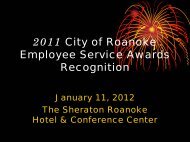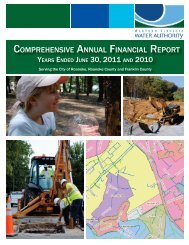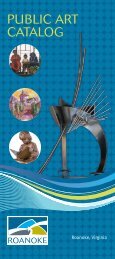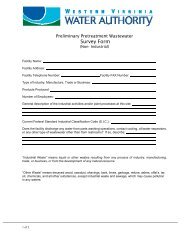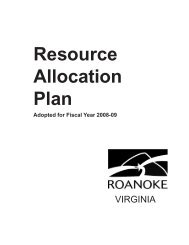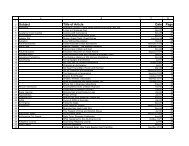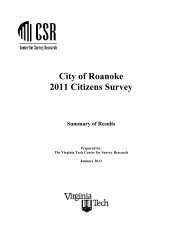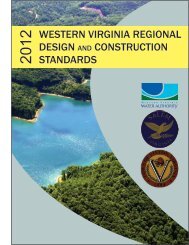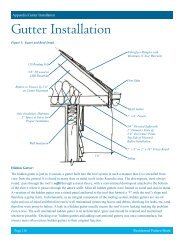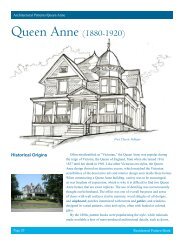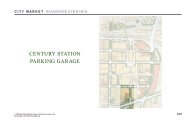Carvins Cove Trail Plan - Roanoke
Carvins Cove Trail Plan - Roanoke
Carvins Cove Trail Plan - Roanoke
You also want an ePaper? Increase the reach of your titles
YUMPU automatically turns print PDFs into web optimized ePapers that Google loves.
<strong>Carvins</strong> <strong>Cove</strong> Natural Reserve<br />
2010 <strong>Trail</strong> Management <strong>Plan</strong><br />
4. If construction of the new trail is approved, the sponsoring construction<br />
group/leader will be responsible for coordinating work days and equipment<br />
and for posting work hours on the database.<br />
5. New trails will be built using the standards referenced in this plan.<br />
6. New trails will only be constructed after review and approval of the <strong>Plan</strong>ning<br />
and Development application and authorization by Parks and Recreation.<br />
4.6 Signage and Marking<br />
<strong>Trail</strong> identification signage has been greatly improved by the installation of new<br />
wayfinding signs at intersections. <strong>Roanoke</strong>’s Parks and Greenways Signage Workbook<br />
provides design guidelines for general informational kiosks, educational/interpretive<br />
kiosks, maps, and regulatory information. Existing, older signage should be removed<br />
when feasible.<br />
Recommended Practices:<br />
1. Remove all obsolete signs.<br />
2. Mark property lines at official and unofficial access points, listing uses<br />
allowed and not allowed.<br />
3. Implement the <strong>Carvins</strong> <strong>Cove</strong> signage plan as resources allow.<br />
4. For consistency on trails:<br />
Use kiosks and/or “you are here” maps at trailheads and entrance gates.<br />
Use trail names and mileage information on maps and signs.<br />
Utilize suitability symbols on all trail wayfinding.<br />
Use the international yield courtesy sign at trailheads and major access<br />
points.<br />
Use stenciled blazes on trees as reassurance markers for obscure trails.<br />
For trails that are not multi-use, clearly post use restrictions at all<br />
intersections – e.g. “Hikers Only”.<br />
Post boundaries and access points to restrict ATVs, other motorized<br />
vehicles, and prohibited activities.<br />
Mark affected trails during seasons when wet weather closures may be<br />
applicable.<br />
4.7 Special Events and Group Use<br />
As the trail opportunities at the <strong>Cove</strong> become increasingly recognized, there is more<br />
demand for special events such as races and more organization of group rides by<br />
private and commercial interests. Because these uses are often organized well before<br />
the date of occurrence, the organizers want to hold the event rain or shine. The <strong>Cove</strong>’s<br />
single track trails were not built for group use, and trail widening, shortcuts, sloughed<br />
shoulders and damaged features are common with such usage. Also, most trails at the<br />
<strong>Cove</strong> cannot handle heavy, wet weather use, and some cannot handle heavy use at all.<br />
Group use poses a social impact in addition to physical impacts on the trail in that<br />
42



